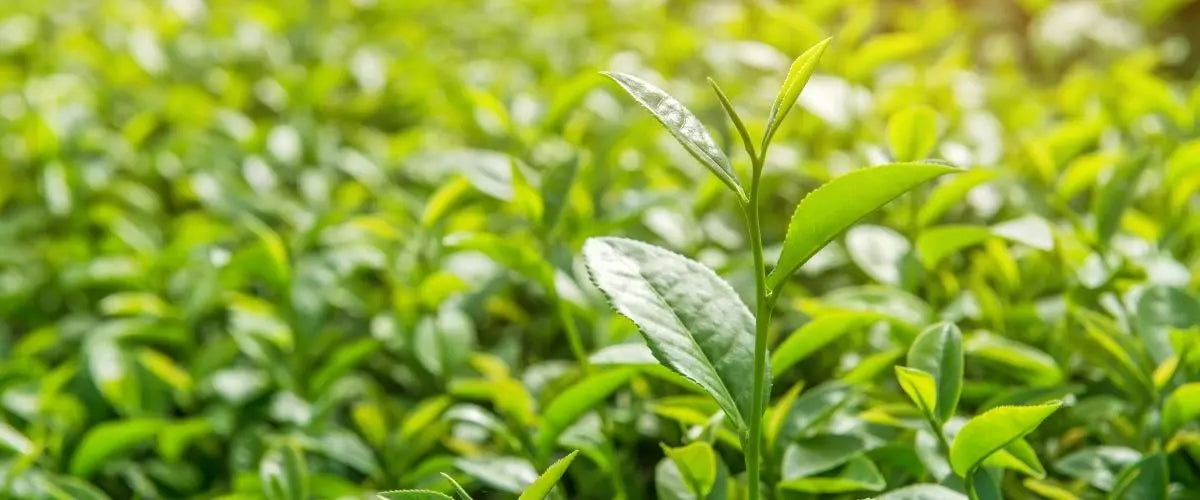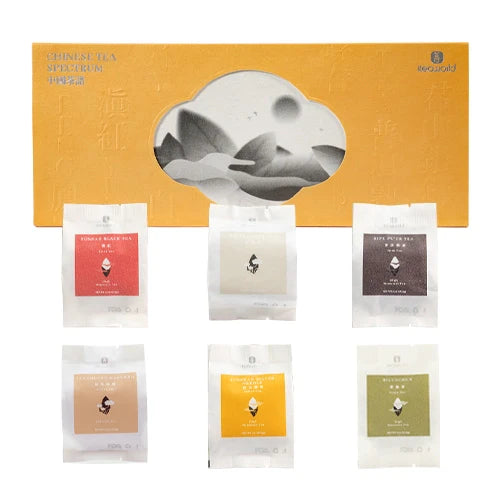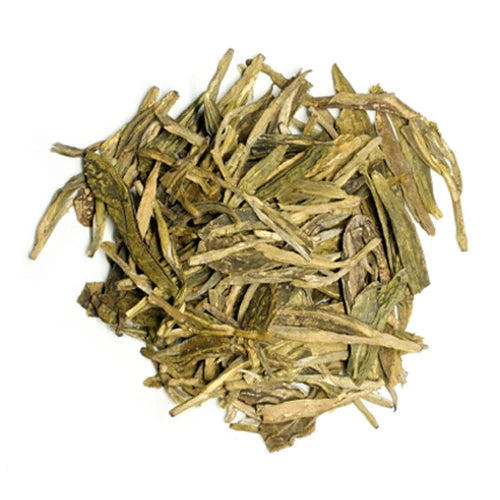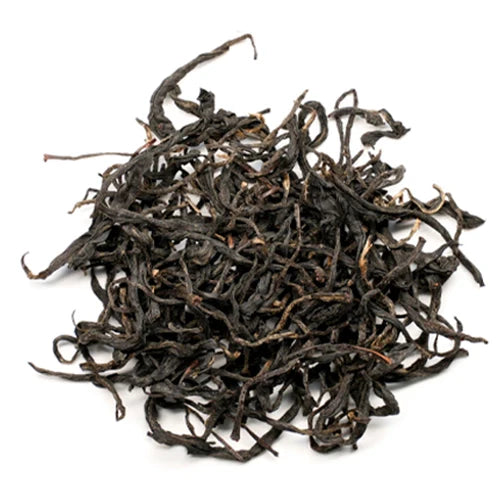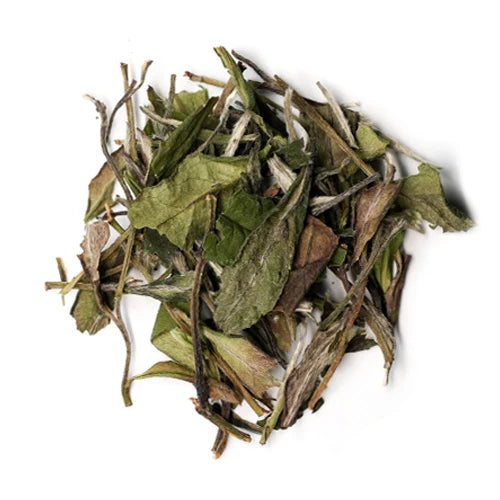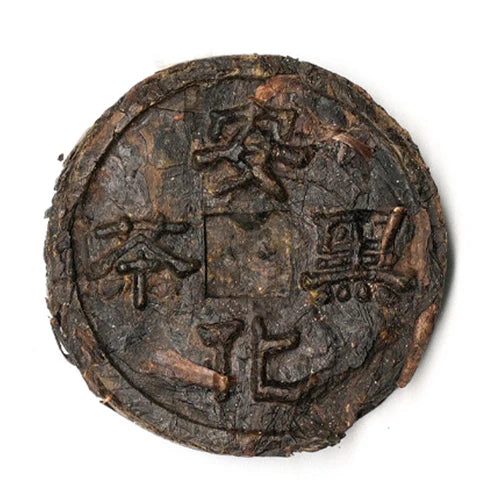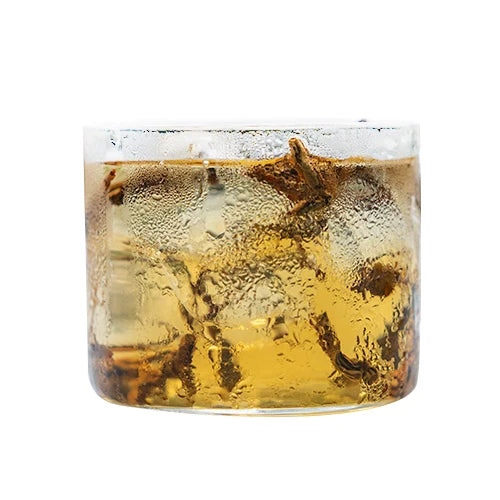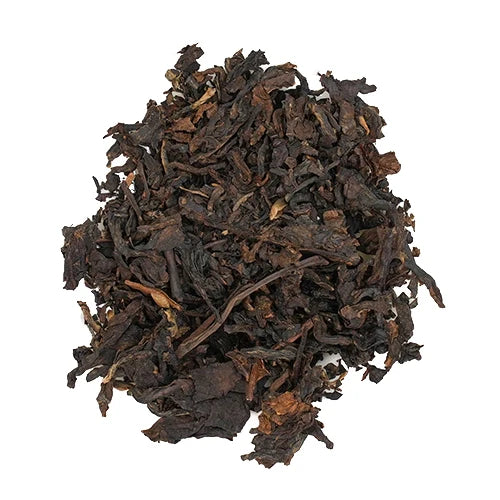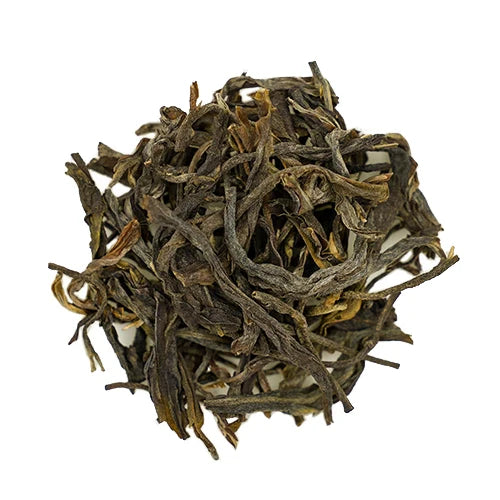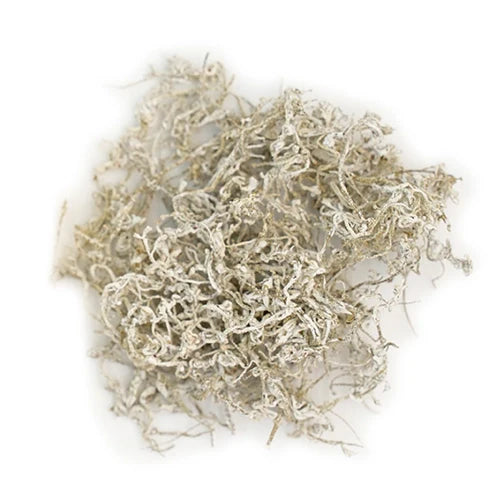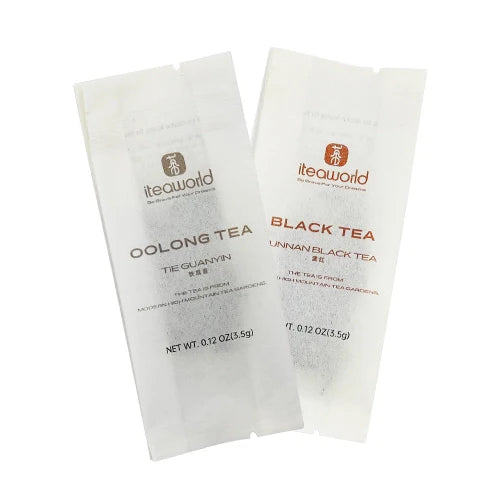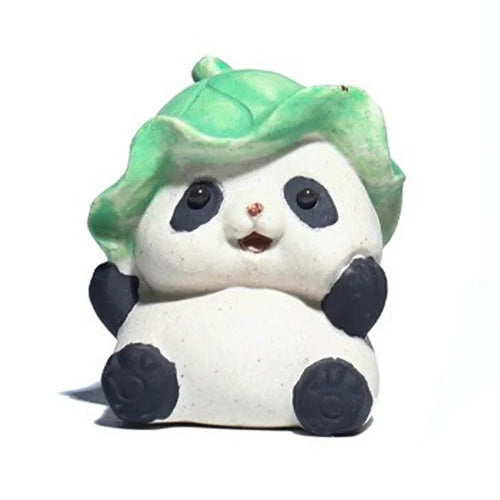Чай Лунцзин имеет историю, которая уходит далеко в прошлое, вплоть до династии Тан в Китае. Был этот известный знаток чая по имени Лу Юй, который написал первую в мире книгу о чае под названием «Классика чая» .
В нем он упомянул, что чай выращивали в храмах Тяньчжу и Линъинь недалеко от Ханчжоу. Ко времени династии Северная Сун чай Лунцзин уже был ценным предметом дани. Когда пришла династия Мин, чай Лунцзин начал делать себе имя, его репутация распространилась далеко и широко. Он начал покидать монастыри и стал напитком для обычных людей. Император Цяньлун во время своих шести южных туров четыре раза посетил чайный регион Лунцзин, чтобы посмотреть на сбор и обработку чая, и он пил чай и писал стихи.
В эпоху Китайской Республики знаменитый чай Лунцзин стал лучшим из лучших китайских чаев. Причина, по которой чай Лунцзин смог стать таким известным и знаменитым, двояка: во-первых, качество чая было первоклассным, а во-вторых, он глубоко укоренился в истории и культуре.
Основные районы производства чая Лунцзин
Чай Лунцзин — супер известный зеленый чай из Китая, в основном выращиваемый в городе Ханчжоу и прилегающих районах провинции Чжэцзян. Вот разбивка основных партий чая Лунцзин:
Производственная зона Западного озера
Это сердце чайной страны Лунцзин, расположенной в районе Западного озера города Ханчжоу. Сюда входят такие места, как знаменитая гора Пик Льва, деревня Лунцзин, Юньци, Хуцяо и Мэйцзяу. Чай Лунцзин Западного озера известен своими четырьмя удивительными качествами: он зеленый по цвету, насыщенный по аромату, сладкий по вкусу и красивый по форме. Это как золотой стандарт для чая Лунцзин.
Производственная зона Цяньтан
Эта область охватывает и другие части города Ханчжоу, помимо Западного Озерного района, такие как Сяошань, Юйхан, Фуян и т. д. Чай Лунцзин из этих мест также может называться Цяньтан Лунцзин или Ханчжоу Лунцзин.
Производственная зона Юэчжоу
Этот регион охватывает части Шаосина, Цзиньхуа и Тайчжоу, включая такие районы, как Кэцяо, Юэчэн, Синьчан, Шэнчжоу, Чжуцзи в Шаосине, а также некоторые части Паньаня, Дунъяна, Тяньтая и других городов уездного уровня. Чай Лунцзин из этих районов известен как Юэчжоу Лунцзин.
Другие производственные области
Помимо трех основных производственных районов, есть и другие места, такие как уезд Паньань и город Дунъян, где также выращивают чай Лунцзин.
Разновидности чая Лунцзин
Чай Лунцзин выпускается в нескольких разновидностях, которые известны своими уникальными качествами:
Групповое разнообразие (Цюньтуй Чжун)
Это оригинальный сорт чая Лунцзин, который считается самым качественным. Чай Лунцзин с горы Пик Льва в районе Западного озера, о котором часто говорят, относится к этому сорту. Обычно сорт Групп собирают немного позже, чем другие сорта, около фестиваля Цинмин. Этот сорт выращивают только в районе производства Западного озера, и площадь посадки очень ограничена. Он немного похож на OG чаев Лунцзин.
Лунцзин 43
Longjing 43 — клонированный сорт, выведенный Чайным научно-исследовательским институтом Китайской академии сельскохозяйственных наук из группы Longjing. Это кустовой тип с листьями среднего размера, полураскидистой позой растения и густым ветвлением. Это сверхранний сорт, известный своей высокой урожайностью и качеством. Он идеально подходит для приготовления зеленых чаев, таких как Longjing и Qiqiang, с плоской формой, гладкой поверхностью, нежно-зеленым цветом, длительным насыщенным ароматом и сладким и мягким вкусом.
Вунюзао
Этот сорт созревает быстрее всего, он начинает прорастать, как только наступает начало весны, и его можно собирать в начале марта. Поскольку Wuniu Early похож на West Lake Longjing и имеет высокую урожайность, некоторые недобросовестные торговцы используют его, чтобы выдать за West Lake Longjing early на весеннем рынке чая. Чай Wuniu Early имеет плоский и гладкий вид, ярко-зеленый цвет и сильный свежий аромат. Он известен своим сладким и мягким вкусом и ярким, прозрачным чайным настоем.
Классификация чая Лунцзин
Чай Лунцзин высшего качества обычно производится из чайных листьев, которые только начали раскрываться из почки, что мы называем «одна почка и один лист». Для сортов с 1 по 3 чай собирают немного более открытым, поэтому это либо «одна почка и один лист», либо «одна почка и два листа » . Для сортов с 4 по 5 чайные листья немного более выращены, с акцентом на «одну почку и два листа» и несколько нежных чайных листьев, которые еще сворачиваются, плюс небольшое количество «одной почки и трех листов». Все, что ниже сорта 6, и вы смотрите на более зрелые листья, обычно «два или три листа друг напротив друга».
Сезоны сбора урожая
Первый сбор чая (то есть весенний чай) должен быть упакован до начала лета, что дает нам всего лишь чуть больше месяца на сбор урожая, и это потому, что мы собираем чай Лунцзин, как только видим почки. Второй сбор начинается примерно во время Малой полноты (солнечный термин) и заканчивается через несколько дней после Зерна в колосе (еще один солнечный термин).
Третий сбор начинается в день летнего солнцестояния и заканчивается за несколько дней до Великой жары. Четвертый сбор, который также называют «маленьким весенним чаем», начинается примерно за десять дней до начала осени и заканчивается в Белую росу, когда мы закрываем чайный сад на сезон.
Требования к распространению чая Лунцзин
После того, как свежие чайные листья поступают на фабрику, перед завариванием их необходимо отсортировать пятью различными способами:
Разные сорта свежих листьев необходимо хранить отдельно.
Листья, собранные в солнечный день, необходимо отделить от листьев, собранных в дождливый день.
Листья взрослых деревьев (в том числе обрезанные) необходимо отделить от листьев старых деревьев.
Листья с чайных кустов, растущих на солнечных склонах, необходимо отделить от листьев с чайных кустов, растущих на теневых склонах.
Листья, собранные утром, необходимо отделить от листьев, собранных днем.
Это связано с тем, что разные свежие листья имеют разные размеры почек и листьев, толщину, глубину цвета, толщину стебля и содержание воды. Например, свежие листья со старых чайных деревьев имеют тонкие стебли и тонкие листья, и им требуется более низкая температура при жарке. Если смешать их со свежими листьями со зрелых деревьев, у которых толстые листья, большие почки и толстые стебли, старые листья могут сгореть из-за высокой температуры, а зрелые листья могут покраснеть из-за недостаточной температуры.
Кроме того, листья с чайных кустов на солнечном склоне имеют зеленовато-желтый цвет, а листья с чайных кустов на теневых склонах имеют более темный зеленый цвет. Смешивание их вместе при жарке приведет к получению чая с пестрым цветом.
Помимо этих пяти принципов разделения, свежие листья также необходимо складывать по сорту и разбрасывать отдельно.
Толщина намазки не должна превышать 3,5 см для высококачественных листьев чая Лунцзин. Если запаса материала для жарки недостаточно, ее можно намазать тоньше. Для листьев чая Лунцзин среднего качества подойдет толщина 7-10 см; для листьев чая Лунцзин низкого качества она может быть до 24 см или даже толще.
Скорость распыления должна достигать 10-15%. Время распыления зависит от погоды, обычно 8-24 часа; в пасмурные и дождливые дни его можно распылять тоньше и на более длительное время; в солнечные и сухие дни его можно распылять гуще и на более короткое время.
В процессе разбрасывания свежие листья следует аккуратно переворачивать, чтобы вода равномерно испарялась. Обычно листья следует аккуратно переворачивать каждые 4-6 часов. Слишком резкое переворачивание листьев может повредить почки и листья, вызывая покраснение, что влияет на качество готового чая.
Искусство приготовления чая «Лунцзин» Западного озера
Мастерство приготовления чая «Лунцзин» Западного озера весьма своеобразно и включает в себя следующие основные этапы:
Сбор урожая : Чайные листья Западного озера Лунцзин обычно собирают между Цинмином и Гуюй, когда листья и почки еще нежные. Сборщикам нужно быть осторожными, чтобы не повредить чайные листья.
Killing Green : Собранные чайные листья должны пройти процесс killing green, чтобы остановить работу ферментов внутри листьев и предотвратить дальнейшую ферментацию. Традиционный метод заключается в том, чтобы обжаривать листья на сковороде при высокой температуре в течение короткого времени, чтобы сохранить листья свежими и зелеными.
Скручивание : После уничтожения зеленого чая листья скручиваются, чтобы помочь им принять характерную плоскую форму чая. Скручиватели должны обращать внимание на силу и скорость, чтобы обеспечить равномерное давление, чтобы листья сформировали уникальную форму чая Лунцзин.
Обжиг на сковороде : скрученные листья обжариваются на сковороде, чтобы высушить их и помочь развить их аромат. Температуру и время необходимо контролировать, чтобы листья быстро высохли при высокой температуре и высвободили свой уникальный аромат.
Обрезка : После обжига чайные листья обрезаются, что означает их сортировку и калибровку для обеспечения качества и внешнего вида.
Хранение : Обрезанные листья хранятся, чтобы дать им развиться и стабилизироваться. Их нужно хранить в сухом и защищенном от света месте, чтобы сохранить их свежесть и качество.
Весь процесс обжига на сковороде делится на три этапа: сырая сковорода, возврат к влажности и финишная сковорода. Сырая сковорода формирует листья плоскими примерно за 15 минут, высушивая их до 70-80% сухости. Возвращение к влажности включает в себя раскладывание листьев на бамбуковой сетке примерно на час, чтобы они восстановили часть влаги. Финальная сковорода высушивает листья еще больше до менее чем 5% влажности и придает им форму, что занимает около 20 минут.
Проверка качества
Проверьте этикетку о защите от подделок
Подлинный чай West Lake Longjing поставляется с антиконтрафактной этикеткой, выпущенной Ассоциацией по управлению чаем Hangzhou West Lake Longjing. Каждая этикетка имеет уникальный номер, который можно проверить, стерев защитное покрытие и введя цифры, чтобы узнать соответствующего фермера или компанию-производителя чая.
Цвет чайного листа
Высококачественный чай Западного озера Лунцзин характеризуется плоским, гладким, элегантным и аккуратно однородным внешним видом с ярким зеленым цветом. Если чай выглядит рыхлым и грубым, легким и перистым, имеет видимые прожилки и тусклый желтоватый оттенок, это признак низкого качества.
Появление
Первоклассный чай Лунцзин имеет ровный, гладкий, элегантный и остроконечный вид, нежно-зеленый цвет, влажный и чистый вид.
Аромат
Чай Западного озера Лунцзин имеет насыщенный аромат с характерным запахом орхидей и ноткой медовой сладости. Поддельный чай Лунцзин имеет тенденцию иметь гораздо более легкий и менее выраженный аромат, лишенный характерного запаха орхидеи.
Цвет чайного супа
Чайный настой должен быть нежно-зеленого или желто-зеленого цвета, яркий и прозрачный. Высококачественный чай Лунцзин не будет иметь желтоватого, темного, тусклого или мутного настоя.
Чай Лунцзин с Западного озера, изготовленный вручную
Он имеет свежий, мягкий и сладкий вкус, который идеально сочетается с его ароматом. Чайный настой прозрачный, яркий и хорошо выдерживает многократные заваривания.
Чай Лунцзин машинной обработки
Он имеет более легкий вкус с более коротким послевкусием. Если температура обработки слишком низкая, чай будет иметь травянистый привкус. Если слишком высокая, вкус будет менее свежим, потеряются характерные свежие, мягкие и сладкие качества чая Лунцзин, и он не будет хорошо выдерживать многократные заваривания.
Советы по завариванию
Температура воды
Вам нужно использовать воду температурой около 75-85℃. Никогда не используйте кипяток при температуре 100℃, потому что чай Лунцзин — это неферментированный чай с очень нежными листьями. Если вы зальете его кипятком, вы повредите листья и вытянете горький привкус, который может испортить вкус.
Как контролировать температуру воды
Конечно, мы не будем использовать термометр для проверки. Лучший способ — сначала налить кипяток в «чистую чашку», а затем перелить его в чайник для заваривания. Таким образом, вы сможете легко контролировать температуру воды.
Помните о технике «высокая заливка, низкая заливка»
При «высоком наливании» увеличивается площадь поверхности столба воды, которая соприкасается с воздухом, что охлаждает воду более эффективно.
Хранение после заливки
После того, как вы налили чай и не собираетесь сразу же заваривать его снова, обязательно оставьте крышку чайника открытой, а не закрытой. Что касается количества чайных листьев, то достаточно, чтобы покрыть дно чайника.
Время заваривания
Время заваривания увеличивается с каждым завариванием.
Свежий лунцзин против выдержанного чая лунцзин
Как говорится в пословице: «Пейте свежий чай, пейте выдержанное вино». Вот несколько советов, которые помогут вам понять, свежий ли ваш чай Лунцзин или он уже не тот:
Цвет
Свежий чай Лунцзин имеет яркий, ярко-зеленый цвет, а чайная жидкость желто-зеленая и яркая. Выдержанный чай, с другой стороны, выглядит тусклым с серовато-желто-зеленым оттенком, просто не такой бодрый и свежий на вид. Если свежий чай смешать с выдержанным чаем, общий цвет сухих листьев может выглядеть неоднородным. Но если смешать выдержанный чай, который был охлажден, иногда бывает трудно сказать, потому что его цвет все еще зеленый.
Аромат
Свежий чай имеет высокий, насыщенный аромат с нотками нежности или каштановых цветов, которые остаются. Аромат выдержанного чая более приглушен и может иметь затхлый, затхлый запах.
Вкус
Свежий чай имеет бодрящий свежий вкус со сладким послевкусием и богатым ощущением во рту. Вкус выдержанного чая становится слабым и разбавленным, лишенным глубины и интереса.
Текстура
Свежий чай обычно сухой на ощупь, давая ощущение хруста. Если потереть его между пальцами, он издаст хрустящий, чистый звук. Выдержанный чай, поскольку он находится дольше, более склонен к намоканию. Он кажется тяжелее и не издает хрустящего звука при трении.
Как отличить весенний чай от летнего/осеннего чая
Чтобы определить, относится ли ваш чай Лунцзин к весеннему или летне-осеннему чаю, следует обратить внимание на следующее:
Форма и цвет листьев
Листья чая Весенний Лунцзин плоские и гладкие с острыми тонкими кончиками. Почки длиннее листьев и имеют нежный зеленый цвет без пуха на поверхности. Более низкие сорта покажут переход от нежно-зеленого к темно-зеленому и даже черновато-зеленому, с более крупными листьями и более грубой текстурой.
Цвет настоя
Настой весеннего чая Лунцзин имеет яркий нежно-зеленый (или желтый) цвет. Для летних и осенних чаев настой, скорее всего, будет ярко-желтым, что указывает на более низкий сорт чая.
Аромат
Весенние чаи имеют свежий аромат, иногда с тонким каштановым запахом. Летние и осенние чаи будут иметь свежий, но более грубый аромат, и общее качество значительно уступает весенним чаям того же сорта.
Вкус
Весенний чай Лунцзин имеет освежающий или насыщенный и мягкий вкус. Вкус летних и осенних чаев, как правило, крепкий, слегка вяжущий и менее свежий, с желтоватой основой листьев.
Основание листа
После заваривания проверьте основание листа. Листья весеннего чая нежно-зеленые и относительно целые, в то время как более низкие сорта будут иметь более крупные, более зрелые листья с цветом, меняющимся от нежно-желтого до зеленого и, наконец, до желто-коричневого.
Выбор временной шкалы
Помните, лучший чай Лунцзин собирают до праздника Цинмин (примерно в начале апреля), он известен как чай «Минцянь», который является самым сладким и нежным в году. Более поздние сборы, например, после периода «Зернового дождя», дают более низкие сорта чая, которые менее свежие и менее весенние по характеру.
Советы по хранению чая Лунцзин
Держите его сухим:
Чай Лунцзин должен иметь низкое содержание влаги, не более 6%. Убедитесь, что производитель чая действительно следит за содержанием воды в готовом чае.
Низкая влажность:
Воздух в помещении для хранения должен быть сухим, в идеале влажность должна быть ниже 60%.
Никаких неприятных запахов:
Не позволяйте чаю соприкасаться с какими-либо запахами. Вы знаете, как губки впитывают запахи – чай тоже такой, но вы не хотите, чтобы он впитал не те запахи.
Вне солнечного света:
Держите чай вдали от прямых солнечных лучей. Свет может повлиять на качество чая, особенно если оставить его на ярком свету на долгое время. Он может разрушить хлорофилл, из-за чего чай станет тусклым и желтым, и его вкус будет не таким приятным. Кроме того, если оставить его на солнце, он может приобрести странный, запеченный на солнце привкус, который будет трудно пить.
Обращаться с осторожностью:
Не раздавливайте чай. Раздавливание может испортить его внешний вид.
Успокойся:
Для достижения наилучших результатов храните чай Лунцзин в прохладном месте при температуре от 32°F до 50°F (0–10°C). Наслаждайтесь путешествием в мир чая Лунцзин и выведите свои ощущения от чаепития на новый уровень с помощью этих советов!

























